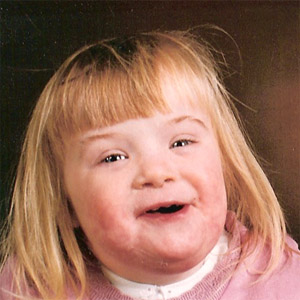PROJECT IN BIOLOGY
I. Introduction
What is Mutations?
- a chemical change in the DNA structure caused by mutagens.
- a mutation occurs when a DNA gene is damaged or change in such a way as to alter the genetic message carried by that gene.
- mutation can result in several different types of change in sequences; these can either have no effect, alter the product of a gene, or prevent the gene from functioning properly or completely.
- mutations are changes in a genomic sequence: the DNA sequence of a cell's genome or the DNA or RNA sequence of a virus. They can be defined as sudden and spontaneous changes in the cell. Mutations are caused by radiation, viruses,transposons and mutagenic chemicals, as well as errors that occur during meiosis or DNA replication. They can also be induced by the organism itself, by cellular processes such as hypermutation.
II. Discussion KINDS OF MUTATIONS:
1. Progeria Syndrome:
- (also known as "Hutchinson–Gilford Progeria Syndrome"), is an extremely rare genetic condition wherein symptoms resembling aspects of aging are manifested at an early age. The word progeria comes from the Greek words "pro" meaning "before", and "géras" meaning "old age". The disorder has very low incidences and occurs in an estimated 1 per 8 million live births. Those born with progeria typically live to their mid teens and early twenties.
2. Down Syndrome:
- (also known as trisomy 21), is a chromosomal condition caused by the presence of all or part of an extra 21st chromosome. Down Syndrome is one of the most serious chromosomal genetic diseases. It happens due to errors during the cell division. When meiosis happens there is an important possibility of undesirable events to happen.
3. Edward Syndrome:
- (also known as Trisomy 18 (T18) or Trisomy E) is a genetic disorder caused by the presence of all or part of an extra 18th chromosome. It is named after John H. Edwards, who first described the syndrome in 1960. It is the second most common autosomal trisomy, after Down syndrome, that carries to term.
4. Patau Syndrome:
- (also known as trisomy 13 and trisomy D), is a chromosomal abnormality, a syndrome in which a patient has an additional chromosome 13 due to a nondisjunction of chromosomes during meiosis. Some are caused by Robertsonian translocations. The extra chromosome 13 disrupts the normal course of development, causing heart and kidney defects, amongst other features characteristic of Patau syndrome.
5. Albinism:
- congenital hypopigmentary disorders, known as albinism, result from a defect in the production of pigment (melanin) in the skin, eyes, and hair. This is due to the dysfunction of the melanin-producing cells (melanocytes).
III. Summary
- I learned that any mistakes can cause a change in the DNA sequence so if there is a mistake in the sequence it may lead into disorders like my examples. Mutation also may affect only one gene or a whole chromosome.
IV. Conclusion/Generalization:
- I conclude that this kind of syndrome are really difficult to handle especially those given examples above.




